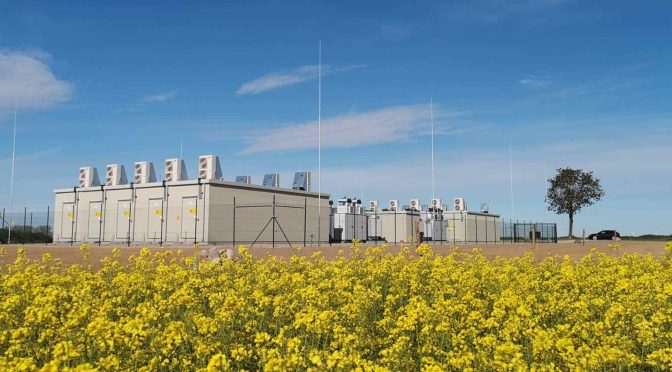To bring new clean energy sources online across the United States and around the world, several questions need to be answered. Where are the best places to build out new generation like solar and wind farms? How can we get all that clean energy from its source to where it needs to be? What is the best way to store that energy until it is needed?
Finding the answer to the last question and others surrounding energy storage is at the heart of Nate Blair’s work as the group manager for the U.S. Department of Energy’s National Renewable Energy Laboratory (NREL) Distributed Energy Systems and Storage Analysis team.
In a new “Long Story Short” video, Blair discusses the possibilities energy storage could hold for the future of clean energy in the United States.
Rapidly Changing Energy Storage Landscape
In discussions surrounding clean energy, energy storage—specifically, batteries—is a hot topic. This is largely due to the dramatic price drop and scale-up of manufacturing for lithium-ion batteries over the last decade, which has made consumer-scale batteries more accessible and opened the door to energy storage research opportunities.
Along with decreased production costs, the technology behind lithium-ion batteries has also improved significantly. The batteries themselves are more efficient and denser, meaning they can both be smaller in size and store a charge longer.
“The focus for much of the investment is in the transportation sector,” Blair said. “Making advancements in increasing energy density and decreasing weight are critical for making vehicles more efficient.”
Increasing Capacities on the Grid
Investments in lithium-ion batteries not only generated advancements in electric vehicles, but also grid-scale energy storage improvements. The NREL Storage Futures Study (SFS), conducted under the U.S. Department of Energy’s (DOE’s) Energy Storage Grand Challenge, analyzed how energy storage could be crucial to developing a resilient, low-carbon U.S. power grid through 2050. The study looked at the ways technological advancements in energy storage could impact both storage at the utility-scale and distributed storage adoption.
“We are looking out at the grid as it potentially approaches 100% renewable energy,” Blair said. “There is a significant set of analysis questions about the optimum way to do that and how much energy storage to include in that solution.”
One of the key factors the SFS examined is long-duration energy storage—large batteries on the grid designed to store up to 10 hours worth of energy—and how it could reshape the role of utility-scale storage. In fact, one report in the SFS found that despite uncertainties about the exact role longer-duration storage could play in the future, the potential for more than 10-hour storage could be great for a more heavily decarbonized grid with high amounts of renewable energy generation.
Storing Up Resilience
Both at the utility and home scales, energy storage can add value to solar and wind energy generation in particular. Energy storage mitigates the issues that come from variable renewable energy because it absorbs the excess energy produced by solar and wind to use later when there is less renewable energy available.
Storing excess solar and wind energy is proving critical in helping communities where energy resilience is a major issue. For example, Puerto Rico has long struggled with extended power outages, especially during hurricane season. NREL’s energy storage and grid analysis research is now, as part of a broad array of activities in Puerto Rico, helping DOE provide homes across the territory with individual solar and battery energy storage systems to help mitigate those outages and ensure Puerto Ricans have clean, reliable, and affordable energy.
Potential Future of Energy Storage
As energy storage technology continues to evolve and improve, new ways of capturing and storing energy are emerging. It is often expensive and difficult to obtain materials like cobalt that are necessary to produce lithium-ion batteries. Other metals that are more readily available, like iron, are now gaining traction, especially at the grid scale. Another area that’s being researched for energy storage is sodium ions. Sodium is both less likely to cause major fires and less costly than lithium.
“There is a ton of sodium everywhere,” Blair said. “It’s a very low-cost material, and researchers are working on getting the engineering right.”
Beyond looking into new materials for energy storage, NREL is also delving into the ways to recycle battery materials and components back into production. To that end, NREL developed the Lithium-Ion Battery Recycling Assessment (LIBRA) model to analyze supply chains for lithium-ion batteries and the impact recycling batteries and their components could have on them.
“All of this goes toward NREL’s overall mission to reduce pollution and create a clean energy future for the entire country,” Blair said.
Watch the “Long Story Short” video, and learn about NREL’s energy storage and analysis research.


